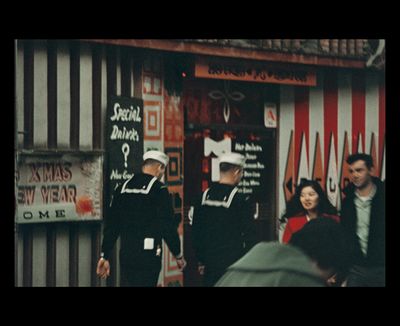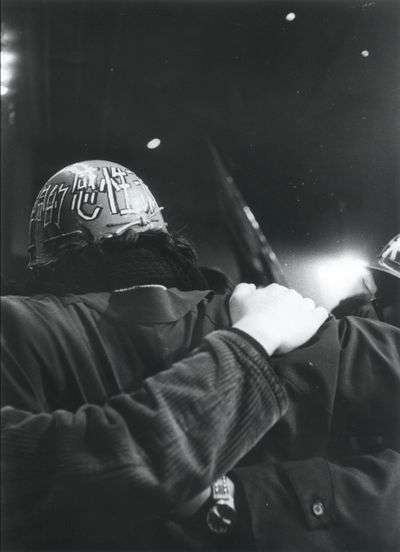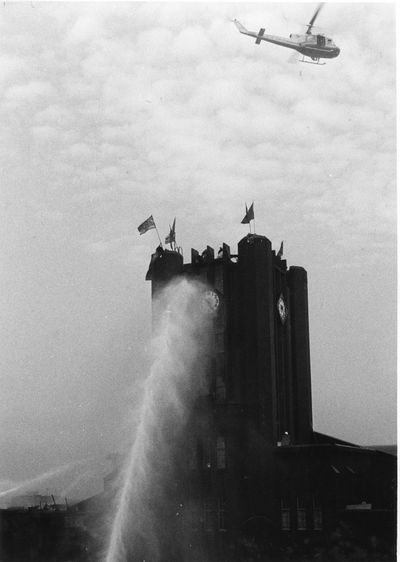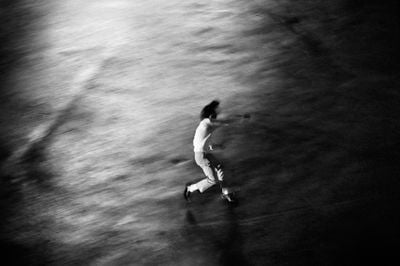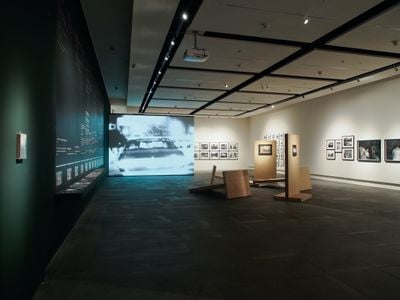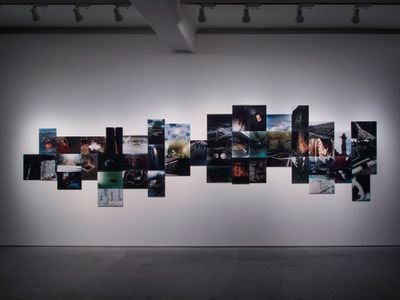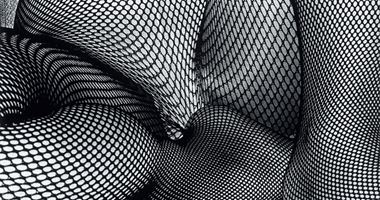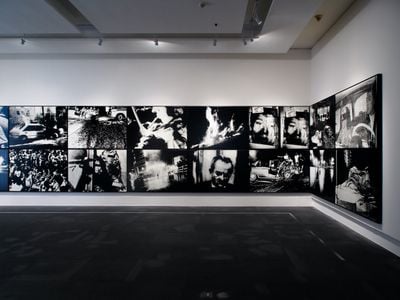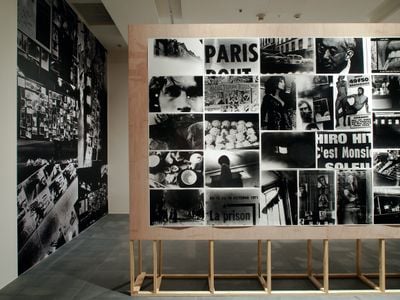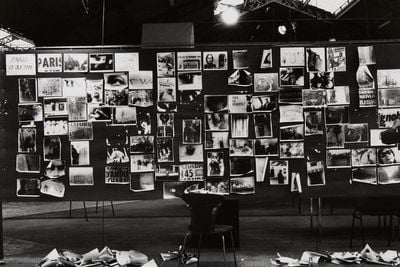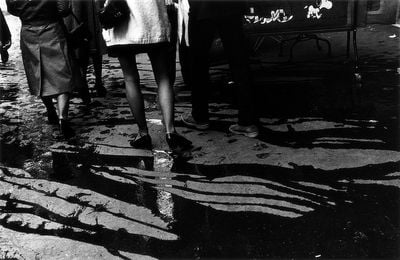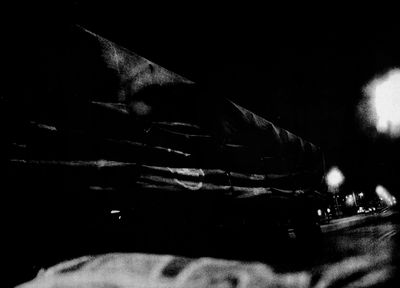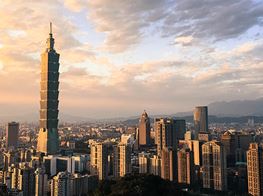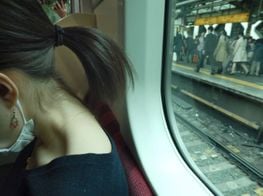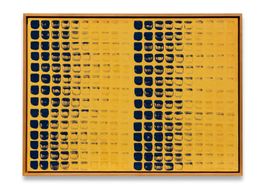Provoke: Revolutionary Gestures by Tokyo’s Avantgarde Group
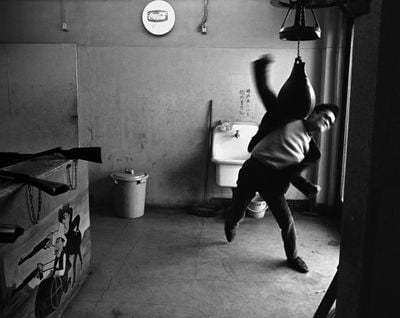
Shomei Tomatsu, 'Oh! Shinjuku' (1969). © Shomei Tomatsu – INTERFACE. Courtesy Akio Nagasawa Gallery.
PROVOKE – Opposing Centrism at Kuandu Museum of Fine Arts in Taipei (12 March–27 June 2021) takes a deep dive into the renowned post-war avantgarde Tokyo-based artist group Provoke, formed in 1968 by Takuma Nakahira, Takahiko Okada, Yutaka Takanashi, and Koji Taki.
The sixties and seventies were an important period in Japanese photography, and Provoke sought to incite new intellectual debates about image-making, with the historic Provoke magazine, founded in 1968 by Takuma Nakahira, Koji Taki, Yutaka Takanashi, and Takahiko Okada, along with providing a space through which artists and members of the group could push the boundaries of language and perception.
Curated by Taiwan's Each Modern and Kuandu Museum of Fine Arts with independent Japanese curators Akio Nagasawa and Yoko Sawada, the show surveys how Provoke treated history as a system of references for their artistic practices.
On display are 122 works by 12 artists created over half a century, from the mid-1960s–2010s, among them Provoke members and supporters influenced by their legacy, grouped according to the categories 'PROVOKE and Activism', 'PROVOKE and Mono-ha', and 'PROVOKE and Capitalist Realism'.
Provoke's proposition entails a revolutionary spirit, combining allegorical appropriation with an interest in the intensity of a gesture or event. At the time of the group's founding, there was resistance in Japan to the influence of the United States both politically and culturally, which culminated in major protests in the 1960s.
In the opening chapter 'PROVOKE and Activism', Hitomi Watanabe's photographs document Japanese college students' protests against the ratification of the Security Treaty between Japan and the United States in 1960, and Japan's role as a military base for the war against Vietnam, among other events.
Watanabe's protest photography series 'The University of Tokyo Zenkyoto' (1968–1969) documents raucous scenes erupting in the city—Japan's riot police holding warning flags and bayonets as they face off against a sea of helmeted people; a bespectacled protagonist with eye bandage grins coldly at the camera; another group of individuals holding long planks of wood looks ready to strike before a backdrop of fire.
In the same section, Shomei Tomatsu's documentary series 'Oh! Shinjuku' (1969) is also on view. Throughout the 1960s and 1970s, Tomatsu bore witness to the student protests as well as the vibrant youth culture of Tokyo, mainly in Shinjuku. In one image, an angry young man raises his fist in a gesture of defiance in what appears to be a typical university dorm room, with the exceptional detail of a prominent long gun locker safe that securely stores three rifles.
Other images in 'Oh! Shinjuku' reflect on the 'counterculture' movement in Shinjuku's underground art scene in the sixties, where radicals, artists, and intellectuals mingle and partake in unabashed and lustful activities.
Bordering on pornographic, Tomatsu's photographs feature a variety of models, naked and in different poses, often depicting both homosexual and heterosexual intercourse. Other daring photos show unclothed female bodies donning elaborate hairdos, ripped fishnets, garters, and big false eyelashes heralding punk rock and newfound freedom of expression.
From here, the exhibition moves into a section titled 'PROVOKE and Mono-ha', which focuses on the period between the 1960s and early 1970s when the Mono-ha artistic movement pioneered experimentations in natural and industrial materials such as stone, soil, wood, paper, cotton, steel plates, and wire.
A matter-dominated curriculum presides over this central section, which explores diverse concepts, such as the space between things and ideas, the essence of inanimate everyday objects like pipelines or motorcycle engines, and the awareness triggered by encounters with the environment.
Works include Susumu Koshimizu's Relief – From Surface to Surface 1 – 25 (2018), 25 intricate structures of patterned wood sculptural reliefs; and Lee Ufan's With Winds (1990), an abstract painting of drips, stains, and smears, their markings resembling those found on sidewalks, floors, and streets.
The most compelling of the exhibits is Takuma Nakahira's series 'Overflow', which was originally presented as an installation at the National Museum of Modern Art, Tokyo, in 1974. Consisting of 48 colour photographs arranged on a wall, Nakahira's photo documentation is a subtle yet rigorous engagement with the ephemerality of experience.
Among the images is a shot of white curtains fluttering in the breeze, a shaft of light illuminating mysterious potholes, a white-bellied shark glowing in the dark, and a newspaper stuck to a car's rear windows. The accumulation of moments frames the present time of the photographic image as material not unlike those utilised in Mono-ha: matter that can be combined to create temporal form.
From here, 'PROVOKE and Capitalist Realism' edges towards the present in its critique of the mass marketing practices and consumer culture exported by the United States after World War II. Daido Moriyama's Scandalous (c. 1960/2016) perhaps offers a historical basis for this framing, in its scrutiny of idealised images of the American lifestyle found in frontpage newspapers and advertising.
Displayed over a wide wall is a confrontational array of enlarged, black and white grainy and high-contrast images, in which mass-media imagery depicting 1960s America's cigarette smoking and car culture is interspersed with a field of gory details and fractured evidence: horrific scenes of accidents, trauma, death, and hysteria.
Woven into this critique is an exploration of American culture's influence on post-war Japan. In a clash of traditional values and modern society, an image of Japanese teen hippies on their Walkmans appears amid an inferno burning down a city block, a closeup view of a vicious killer, mangled cars and blood trails on the road.
Perpendicular to Moriyama's work, on a freestanding wall of the same room, is Takuma Nakahira's Circulation: Date, Place, Events (1971), a wall-based photographic installation comprising 50 black and white images.
This selection from around 1,500 images that the artist both exhibited in and made during the Seventh Paris Biennale in 1971, shows an intermingling of subtle and varied relationships. There are shots of a pack of dogs, a city street strewn with apples, a street poster of a half-nude male model, and the haunting and atmospheric images of metro stations, cafes, restaurants, and nightclubs of Montmartre.
Nakahira tackled mundane or familiar subjects in urban landscapes, composing still-life frames with tight and precise shots as if to reclaim and exalt the value not only of an image, but of the moment it freezes in time.
PROVOKE – Opposing Centrism grasps the provocation of the artistic gesture as a means of making sense of the world by inviting audiences to become involved participants in witnessing its complexity, from the capturing of a student protest movement to the assemblage of images that accumulate to express a more nuanced expression of the present moment as it unfolds.
Provoke was not just a mere attitude or avantgarde aesthetic, as this exhibition demonstrates. It was an artistic wave that was not only activated by the social and political transformations happening at the time, but which sought to activate those transformations in turn by inviting audiences to become involved participants. —[O]


